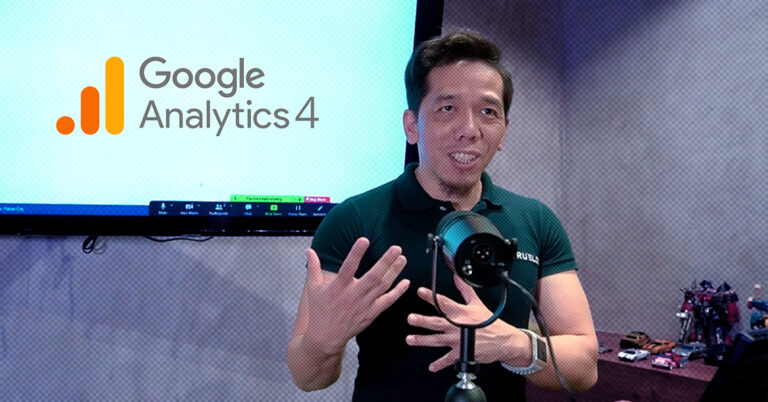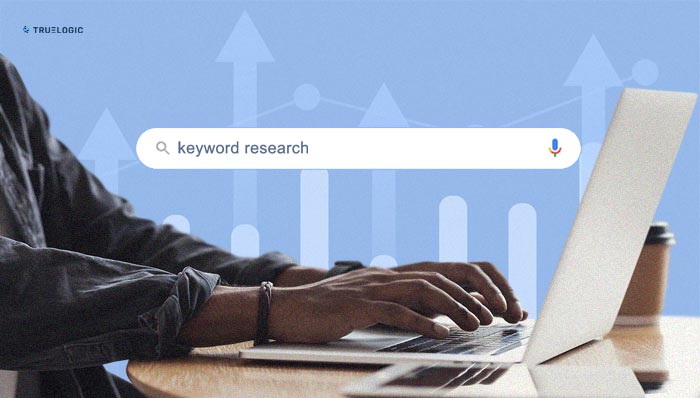Truelogic Episode 96 Recap: Cebu Pacific vs. Philippine Airlines: SEO Battle of Airline Companies
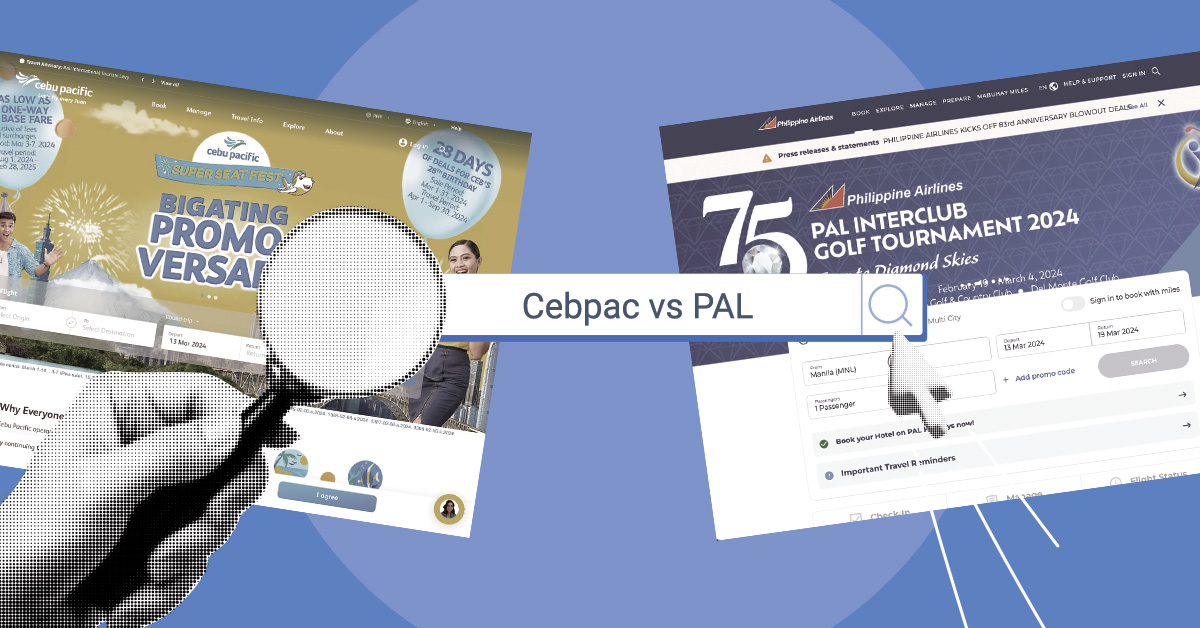
Being the major airlines in the country, both Philippine Airlines (PAL) and Cebu Pacific (CebPac) dominate the skies in their bid to compete with each other. While the former is a long-standing figure in local aviation, the latter is a budget airline whose entry into the market has shaken up the industry.
But what are the strengths and weaknesses of both airline giants when compared side by side in terms of SEO? Tune in to this podcast episode.
SEO Analysis: Philippine Airlines vs. Cebu Pacific
Timothy Uichico: Hi guys, welcome to another Truelogic DX Podcast. So today joining me is Issa, our SEO analyst. So in another SEO teardown, we’re gonna be looking at the two major airlines in the Philippines, Philippine Airlines and Cebu Pacific. As you all know, Philippine Airlines was founded in 1941. They’re the oldest commercial airlines in Asia that still have their original name. And CebuPac is the disruptor that came in 1988, right? They came out and positioned themselves as a very affordable airline service. So before we begin, Issa, would you like to say something about yourself?
Isabella Olivares: This is my first time on a podcast, but interestingly, not my first time on broadcast.
Timothy Uichico: Wow. So now we will go through what we call our teardown comparing both websites, seeing who did it better, right?
Website Authority
Timothy Uichico: So for our first metric, we’re looking at this authority just for the people who are joining us for the first time in this kind of teardown. Authority is basically how authoritative or how well Google sees your website, right? How often they visit and how often you’re talked to online. Right. So between CebuPac and PAL, who would you say is more authoritative?
Isabella Olivares: Okay. Well, for the disclaimer, we have to use third-party tools to figure this out because we do not have access to that information directly from Google. But if we look at Ahrefs, we can see that PAL has 76 DR or domain rating. That’s Ahrefs, that’s their terminology. And we have Cebu Pacific at 75.
Timothy Uichico: So, which is better? Can you sort of walk us through what that range is? Is 76 a good score? Is that a bad score?
Isabella Olivares: I’d say it’s pretty good. Well, this is in comparison to other websites I’ve seen where their rating goes to like 20, or some websites have even like four. So I’d say 76 and 75 are pretty good.
Timothy Uichico: So 76, 75 is pretty good. They’re roughly close to each other, right? When we’re talking about how often they’re talked about online, which would you say has a little bit more voice or a little bit more footprint there?
Isabella Olivares: Well, okay. If we’re talking about how often other people talk about them, we can look at something like backlinks as an example. And I would say in that count, Cebu Pacific edges out PAL, actually more than an edge. Cebu Pacific, I think has 1.9 million backlinks according to Ahrefs, while PAL only has 448,000.
Timothy Uichico: So when you say that, CebPac is being talked upon more often online versus PAL. Why would you say that they sort of edge out CebPac in the authority game?
Isabella Olivares: Well, we can also look at things such as PAL as a company for starters. They are the flagship carrier of the country. So by default, they’re kind of seen as a bigger airline, as you could say. They also have a bigger website because they have more international destinations than Cebu Pacific.
Timothy Uichico: So you can also say when it comes to authority, PAL has more things that they can link to and more people and has sort of the respect in the industry. Going through each one. So for this round, you can say PAL does edge out CebuPAC just slightly a bit.
Isabella Olivares: I think what Cebu Pacific kind of has going for it, at least in terms of like its images, because it’s cheaper and they have more promos, more seat sales more often. Inevitably, people will be talking about that a little more. That might be why they have more backlinks, you know, like newspapers.
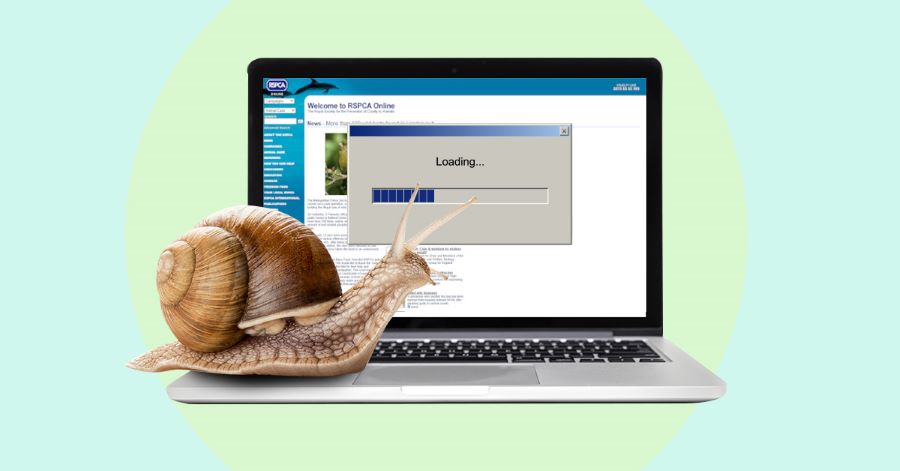
Website Speed of Cebu Pacific and Philippine Airlines
Timothy Uichico: So they make a little bit more noise in terms of the fact that they are an affordable provider and more people can access their source services from getting point A to point B. So going through their website, we have noticed and I think a lot of our people who have tried to book on both airlines will sort of notice this issue across the airline industry specifically for CebuPAC and PAL. We’re looking, let’s talk about website speed. So can you share your insights on that, Isa?
Isabella Olivares: Okay, so if you look at the page speed of Cebu Pacific, you’ll see that they have a score of 1 for mobile speed and 9 for desktop.
Timothy Uichico: So is that great?
Isabella Olivares: No, that is horrendously slow. That is a snail’s pace. Whereas PAL is slightly better, slightly faster at 11 speed for mobile and 53 for desktop. It means PAL is just marginally faster.
Timothy Uichico: Marginally faster but still slow. So I think all the audiences can agree in our podcast that both websites are a bit slow and there’s something a bit more wanting to be able to sort of book, to see their promos, to see other pages. Going into that, you still have to book through their website, right? So we can give sort of a faster website to PAL, but as a caveat, we can call it a draw because they’re still both small. They’re both slow. They’re both very slow.
Indexed Pages
Timothy Uichico: How do we sort of quantify you saying that PAL was a larger website or has a bigger footprint versus CebPac?
Isabella Olivares: Well, we can also look at how many pages have been indexed. So when Google indexes a page, it’s like creating a copy of a page. And then, so when you search for something and Google deems that page as relevant to the search, they will pull up that copy, like the copy that they have in their database sorts.
Timothy Uichico: So basically, when you have more index pages, you have more opportunities to appear in Google search and then to drive more traffic. Coming into that, you were saying PAL roughly has almost 10 times the amount of index pages of CebuPAC. There are around 12,000 while CebuPAC’s around 1.7,000. So coming into that, how much traffic do those pages drive?
Website Traffic of CebPac and PAL
Timothy Uichico: With CebPAC, I think we can see that they roughly have 3 million, 3.7 million, and then PAL has 3.9 million. Let’s break that down. So clearly, we’re giving PAL a little bit more, but can you share your insights on why you think that is true?
Isabella Olivares: Well, I think PAL will drive more, has more traffic, one, because they have more destinations. So that’s a big factor. I think PAL has 40 international… They have a total of 73, I think.
Timothy Uichico: Overall, I think, when you’re looking at PAL versus CebPac, PAL has 73 destinations, both international and local, while CebPac has before. Right. So just based on the amount of content you can produce, PAL has more opportunity to talk about different places while CecPac has less.
And if you’re looking at it, it does reflect on the number of pages they have indexed. And you’re looking at the ranking keywords, you did mention that PAL has 71K or 72K keywords, right? That can be found on Google search compared to CebPac’s 35. But if you’re looking at that, so there’s a big discrepancy between index pages and keywords. However, for the traffic, there’s roughly only a 200K difference, right? Can you share your insights on where that traffic comes from or where the difference comes from?
Isabella Olivares: Well, I think the thing to consider is one, because Cebu Pacific offers more promotions, more seat sales, if you look at what the top performing pages are for Cebu Pacific, a lot of it, are pages related to those things. And those pages are there to generate interest in travel.
So if you’re thinking, I want to go on vacation for the weekend and you’re looking at possible destinations, you’re going to consider, okay, who has promotions out this week? So that is, I think, a thing that helps boost Cebu Pacific’s traffic is that they have these pages that generate interest, that tell you these are the flights that are cheap now.
Timothy Uichico: And who doesn’t like a good deal on travel? So for Pal, you were saying what would be the difference? If Cebu Pacific’s traffic driving function is the piece of the sale, the seat sale, and the promotions they have across their 64 destinations. So what does PAL have going for them?
Isabella Olivares: I think what PAL has going for them is that one, their website, I think is geared less towards generating interest or telling people, hey, you can travel. But it’s more designed for people who already have the destination in mind, they know they want to get there and they’re just picking the airline that they’re going for. And so I think that’s a thing that PAL has going for them is it’s easier for starters to book on their website. They make it immediately easier on their homepage. And yeah, I think that what PAL goes for is, not just like users that are ready to fly.
Keyword Optimization of Cebu Pacific and Philippine Airlines
Timothy Uichico: Interesting enough. You did mention that PAL has users, that are being driven by certain keywords like flight to X destination, flight to South Korea, and flight to Singapore versus CebPac which are flight promos, and piso fares. If you look at these, this breakdown. From the 3.9 million visitors that PAL is driving, roughly 200K are discovered, meaning non-branded keywords. People who are not searching for a PAL, who don’t have a preference, and only 2.4 are branded. So if you’re looking at, while PAL has a very, very healthy branded traffic, they have a lot of majority non-branded traffic, meaning people who don’t yet know what airlines they want to travel for, as compared to CebPac, which has 2.7 and branded traffic.
So take note, as we were saying, CebPac has a stronger brand preference based on how often they’re talked online, based on the keywords that are driving our piso fare, you know, promos, CebPac promos. But their non-branded search, meaning their ability to acquire new customers who aren’t preferential to CebPac is only $60,000, right? That’s only one-fourth of what is generated in terms of non-branded search.
And that’s where the difference comes into, I think when we were discussing, like, you and I in terms of, you know, oh, yes, PAL is sort of getting these keywords. What’s important is PAL is getting the people who don’t have an airline preference, yeah, right, compared to CebPac who are looking forward to people who are searching for cheaper flights or CebPac promos, which they’re known for.
And you can sort of tie that in the marketing perspective, the fact that their target market is very, very different, right? I would say for the people and you hit it on the nail a while ago for the people who are booking PAL, they’re not as price sensitive as a setback, right? They already know a destination they want to go to. They already know exactly what kind of airlines they want to book while the CebuPac traffic roughly are people who are looking for cheaper flights or cheaper alternatives, right? So very, very different target market. And those who are sort of joining us.
I guess if you look at the CebPac homepage and the PAL homepage where we’re going through other page content if you look at the search function of CebPac, they’re looking just from and to destination plus your dates, while PAL has a more robust search function which has to and from number of passengers, what kind of classes, where their economy, business, departing dates, and if you have miles or holiday deals, right? So if you’re looking at it PAL is assuming that their target market, the people who have a little bit more money to spend on comfort, know exactly what kind of service they want versus CebPac where they’re looking for cheaper alternatives right there, maybe their destination may be up to the cost of their flight.
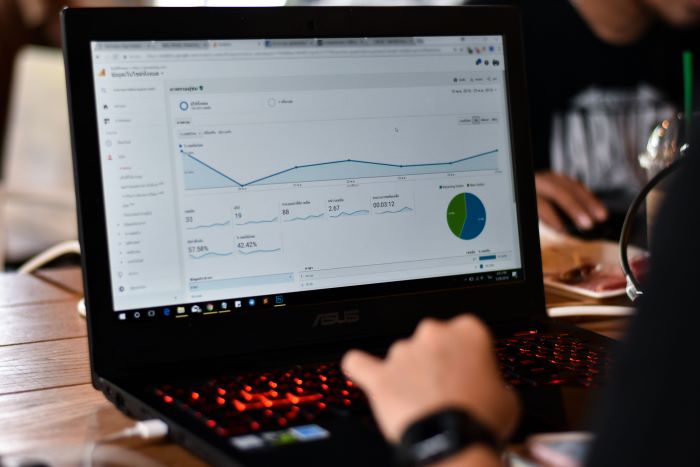
On-Page SEO Properties of CebPac and PAL
Timothy Uichico: Going into the on-page portion of when we’re looking at PAL versus CebPac, let’s go through whether or not they’re doing well in terms of SEO capabilities. So if you have joined us before, we have always hyped that the H1 being the strongest on-page element should not be used for design and should be used for building customer-centric titles for the page that are SEO optimized. So both PAL and CebPac, let’s go through their headings. Who did it better? Who did it good?
Isabella Olivares: Well, I would say that in terms of their H1, they both didn’t do very well on it. And that’s because Cebu Pacific, has some pages that have an H1, but a lot of pages will have multiple H1s, which we always say is not a good thing to do. Because your H1 one, it’s going to be… it is the thing that tells you this is what the page is about. And if you have multiple H1s, it’s going to be confusing. It’s like writing a research paper with two different topics at the same time. It’s confusing both for the user and the crawler.
Timothy Uichico: Okay, so I agree. Typically as best practice, we do use H1 as content to define all the content below so that the user is not misled and so that the search engine is not misled. We are saying if you want to book your flight, you go to this page. If you want to see baggage info, you go to this page. How about PAL?
Isabella Olivares: Okay, now the thing about PAL is it’s pretty inconsistent. I think they have pages that don’t have H1s. They have some pages that do and sometimes their H1s aren’t even related to the topic of the page. So that’s, I would say that’s pretty poor optimization of the H1s for both of the websites.
Timothy Uichico: So for both the websites, they get a score of zero, I guess you can say. Given that they could sort of build on that, how are we looking in terms of the meta title, and meta description?
Isabella Olivares: When it comes to meta titles, what we can notice is PAL, their meta title is going to usually be the same as their H1, if they have. Whereas with Cebu Pacific, I think they don’t have any meta titles on there.
Timothy Uichico: Okay. So is that important? Is that? Is that marginal? Can we let that go? Should we have meta titles and meta descriptions? What are we looking at?
Isabella Olivares: Well, I would say that we should have meta titles because those can be the titles that you will see on the search engine results pages. And those titles should encourage users to come in and look at the page. So they should reflect what the page is about. But I think it should also be different enough from the H1 so that it is engaging.
Timothy Uichico: Coming into that, you can both say that they also both scored zero.
Isabella Olivares: Okay. Maybe not zero, like a 0.5.
Timothy Uichico: How hard is it to optimize an H1, a meta title, meta description?
Isabella Olivares: I would say not very hard.
Timothy Uichico: So it’s something that they should have done from the first place.
Isabella Olivares: Oh yeah. I would say like you, and also especially considering how many pages these sites can have, it’s good to like, as you’re building your website, to optimize these things as you’re building it. That way you’re not left like trying to optimize a thousand meta titles.
Content Marketing: CebPac vs PAL
Timothy Uichico: So going back to when we’re talking about on-page SEO, clearly they have some optimizations ready for the H1 meta title. How about content marketing? When we’re talking about PAL versus CebPac, given that it’s not necessarily a one-is-to-one comparison, because as we clearly define the marketing target market of PAL is or people who know where they want to travel, people who sort of know what kind of service they want to receive, they’re not as price or cost sensitive. As the ones in CebPac, we’re looking at the lowest rates or we’re looking at something more convenient to your wallet. So where did they do well and not do well?
Isabella Olivares: Well, I think what both websites did well was they addressed what they perceived to be the primary concern of their users. So for example, like we said, PAL is looking at people who know that they want to travel, they know where they’re going. And so if you look at their content, a lot of their content is geared towards preparing for the trip. Like the special, a good, like a nice cycle category I like to look at is the special needs and requests and assistance for airlines. And if you notice PAL, what they did was every special request you might have has its page. So that they can go more into detail like, okay, if you were traveling in a wheelchair, this is how you can request for assistance the kind of assistance we can give you.
Whereas with Cebu Pacific, if you look at their, all of their content is geared towards generating interest in the destinations in what destinations they can offer. So if you look at, let’s say, if you go to the destinations pages of Cebu Pacific, they actually will tell you what you can do in those cities, whereas PAL will just straight up give you the flights.
Timothy Uichico: So for those who have not explored both websites, it’s pretty interesting to say that on their navigation, both of them have the book, which is great because the whole point of both their websites is to be able to facilitate a booking on the top left, which is where your eyes see. But interesting enough, what Isa was saying, was that they have a tab that’s called explore or send back when you click explore, it will show you or try to generate interest on, oh, you should go to Dubai. When you’re looking at PAL, it just straight up shows you these are the flights towards Dubai, these are the restrictions.
So in line with their marketing goal, you can say what is better or worse. But in reality, I think they both do well in identifying their target market. And then writing content to create that. I think that’s why they do have, you know, 3.9M in traffic, 3.7M in traffic. So this is also amazing considering that they could have gotten more had they done the quick optimizations we were saying much earlier. Another interesting thing, if you look at it, which Isa also fleshed out, in terms of getting content to the navigation on the special needs on preparing your travel, PAL has super fleshed out content.
While CebPac, is sort of treated like a minor thing, right? So we talked a bit about content. We talked about how well, and then I think we can give points to both, given that there is valuable content on the website for both, they’re both talking to the user, addressing their needs, just different users, right? How about the user journey? How hard was it for you to navigate through each website?
Cebu Pacific and Philippine Airlines’ User Navigation
Isabella Olivares: Well, I will say that because PAL has sort of fleshed out their content, they went for the long route of content. And because of that, I found it a little easier to navigate through PAL’s website than Cebu Pacific. So I think, I guess it also goes back to what Cebu Pacific and PAL were aiming for, because if you notice Cebu Pacific on their nav, they went for fewer pages on their nav, but they give you all the pages that they assume you’re going to want right away. So under the booking tab, which is the first one.
They have the book and the flight, but they also have the promos and the details there. Whereas PAL went straight for, okay, you’re booking your flight, and then the management, how to manage your flight and discounts, etc. Discounts for like people, let’s say PWDs, senior citizens, military veterans, etc, So I, but I do think that PAL because they maybe gave each service its page and they arranged it a little better in my opinion. And as someone who kind of wants the information, they’re easily accessible. I would say PAL did a better job in my opinion with the navigation.
Timothy Uichico: So navigation-wise, we’re saying PAL has one. Navigation-wise, it’s easier to get from one piece of page to the other, and towards booking while in CebPac, it’s a little bit more difficult to find what you need. What we’re also looking at, I don’t know if some of you have noticed, some of you who booked CebPac probably noticed, like if you’re going to your booking platform, it’s hard to get back to the informational content, right? And if you’re also going to additional content that’s on other sides, for example, in terms of navigating to explore pages, they’ll notice the booking option is gone, right?
You have to go back to the homepage to restart your journey. While PAL has a more fluid center, you’re going from page to page to booking, and then you can also easily go back to an informational page that you may need, right? I think under there, PAL has a much, much better user journey than CebPac.
Isabella Olivares: And that’s important considering how slow both websites are.
Timothy Uichico: That is also true, tying back to… You don’t want to go back and just look for information given that that treasure trove is already hard to find and already slow to find. Right. Okay. So I think just to recap, when we’re going through to our teardown, right? With authority, we slightly give to PAL. Technical score, they both fail. It’s hard to give points for something that can all agree is very slow. On page-wise, in terms of content navigation, we can give it to PAL.
When we’re looking at traffic PAL, PAL slightly does better than CebPAC, not necessarily buying a lot considering that there are many pages that PAL has optimized and given the amount of content they can produce and optimize. So slightly edge in terms of the technical on-page side, having H1s, meta title, meta description, we have to kind of give it to PAL, like slightly just because they have a better user journey, they kind of have a bit more inconsistencies, but they still have more stuff than CebPac, very marginally. So coming down to that, Issa, let’s run down what you think PAL or CebPac did well.
Isabella Olivares: Well, I think they both did well at addressing their users’ needs, right? Because they both kind of target different markets. And I think they did a very good job at that. They also do, I think, and I think that reflects throughout the content of the website and how they arrange the navigation. I think that’s like the bit that I will say, like hands off to these guys for that.

Unsolicited Advice for Philippine Airlines and Cebu Pacific
Timothy Uichico: So here’s the interesting part. What do you think are quick wins for them?
Isabella Olivares: Quick wins? How would you define a quick win?
Timothy Uichico: So I would define it as, so obviously we’d all want them to have a faster website, but we all, being in the field, you know that that’s not an easy task. So what are things like if you were the SEO or if you were in charge of PALs website, what would be the first few items you would do?
Isabella Olivares: Okay. Well, if I were in charge of PAL’s website, I would first optimize the speed. I think that’s like the quickest win. And then I would also look at their H1s, their meta titles, and meta descriptions. I think those are very important as well. I would also look at if all of the pages that are indexed need to be indexed. I think that’s also a thing to look at.
Timothy Uichico: That’s very interesting. Very interesting. They have a lot of pages, but if you look at the page ratio to traffic driving, they drive per page, they drive less traffic than CebPac.
Isabella Olivares: And that might also be because it’s maybe their index results might be a little cluttered, maybe there are pages that they don’t need to have indexed. That’s also a thing to look at because it will affect your crawl budget, it will affect, I think we have to remember that Google likes it if we can give the user as seamless of an experience as possible. So I think that’s another thing we can look at. And we can also look at what destinations they have that maybe aren’t driving as much traffic as others.
So one thing I noticed when I was looking at the top keywords for the top performing keywords for PAL were a lot of things like online booking e-tickets. But I also saw one that was like Manila to Cebu and Cebu to Manila, which surprised me considering that CebPac is in their domain,
And so I think there maybe we could look at optimizing further, for keywords for their international destinations because I think they do pretty well domestically.
Timothy Uichico: So to summarize, you know, picture page speed, right? Apply the technical on-page H1, meta title, and meta description, check your pages to see if you need that many pages indexed, and from the pages that are indexed, see which ones you can leverage. How about CebPac?
Isabella Olivares: Well, again, speed, is always important. Always important. I would look at actually trying and also H1s, meta titles, and meta descriptions, of course. I would also try to look at Cebu Pacific trying to drive more non-branded traffic. Because like we said, Cebu Pacific has more branded traffic, but that means that they’re losing out significantly on non-branded. And I think that’s a shame for them because they do have a fair amount of destinations. They’re pretty affordable. So these are, I think we could try looking at that if I had the campaign or if you had the campaign. I would also look at maybe they’re now fixing up, adding more pages that maybe people would be more interested in.
Timothy Uichico: I think just to sum up, so balance it back, same. Fix your page speed, fix your technical on-page elements, and then where it slightly deviates is one for setback. See what non-branded keywords or how to get new customers on your website, and then fix your user journey, right? We have mentioned that it is not as seamless as PAL. So in this teardown round, Isa, who would you say is the winner?
CebPac vs PAL: Who is the Winner?
Isabella Olivares: Well, I would say they both had things that they did well and things that they did poorly in. But if we’re looking at the numbers, we’re looking at traffic, we’re looking at what kind of traffic they drive, I’d say PAL kind of takes the lead here.
Timothy Uichico: Do you think PAL takes the lead? Do you think it’s a large, by a large amount, by a small amount?
Isabella Olivares: Hmm, I’d say if you’re looking at the numbers, I think like at first glance you’d go, okay, it’s a pretty big lead. But I do think that given that PAL is kind of like a more prestigious airline. Yeah, established. I would say their lead is not as big as it in theory should be.
Timothy Uichico: PAL had a 40-year head start to sort of build their brand. And yet, CebPac, some people still talk about them more than PAL. And then if you’re looking at it as a business, as a household name, you know, as carrying the hearts of Filipino people. Right. Yes, I did that. You would have thought that they would have been much, much more ahead in the digital space than CebPac. But that’s also why they call CebPac the disruptor, right? They brought low-cost flights. They allowed almost everyone with a small budget to travel either locally or abroad through an airplane. They brought affordable travel to the Philippines by airlines.
Isabella Olivares: You could say that they service every Juan.
Timothy Uichico: Yes, you did that. So thank you again for joining our website Teardown. I hope you enjoyed mine and Isa’s own. And that’s it for this episode. If you’ve got questions, comments, or suggestions, give us a shout-out on social media. Subscribe to our Spotify, Google, and Apple accounts.
We’re on Facebook, LinkedIn, and YouTube, Please do like our page, subscribe, click the follow button, and then we’ll see you guys soon.




